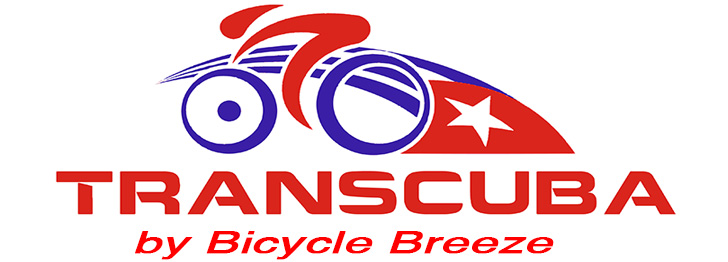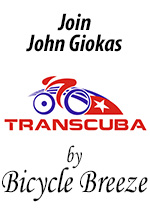July 7/03 1:40 am - Tales from the TDF
Posted by Editoress on 07/7/03
From the CCES daily newsletter
Some riders will do anything to gain an advantage
By Les Woodland
THE GRAVEDIGGERS WHO lead a largely uneventful life in the Cimetière Est outside Lens had been there for years before they realised whom they had for silent company. Then an Italian television reporter pointed out that, stuffed into a grave in section F3 along with other members of his family, was the first winner of the Tour de France. Since then they have grown indignant that Maurice Garin has no memorial other than his shared headstone.
"If he'd been a politician or a footballer, he'd have a statue," Maurice Vernaldé said in another break from tending his dead charges. "But Garin is forgotten."
Garin won the first Tour, in 1903, after going so fast that he got to the first day's finish before the race organiser. But he and the next three riders were thrown out in 1904 for "widespread breaches of the rules". They were listed, but the details were considered too awful to publish. Then they were lost. But among the suspicions is that Garin expanded the concept of cycle racing to include catching a train.
"He may have denied it, but I knew him as an old man and he certainly confessed to it then," Vernaldé said. When Maurice Carrère, Henri Gauban and Gaston Tuvache emerged with a guilty smile from Dijon station two years later, it was to find Tour officials standing at the exit.
That 1904 race set the pace. Henri Desgrange, the organiser, was so upset that he nearly did not organise another Tour. Not only had riders cheated, right down to sitting in cars when they should have been racing, but spectators had, too. On the Col de la République outside Saint-Etienne, a mob had beaten up all the leading riders so that a local favourite could pass unscathed. Only gunfire dispersed them.
Even team officials were guilty. One gave Paul Duboc, a French rider, a poisoned drink in 1911, with the result that he lay retching for more than an hour because the rules said that no one could help.
In 1920, Napoléon Paoli, a Corsican, hit a donkey on the road to Bayonne. He was thrown over the handlebars and on to the back of the donkey, which promptly ran back down the road the way that Paoli had come. For want of a better idea, Paoli clung on until the donkey hurt a leg and stopped. He ran back to his bike and would have finished the day but for a rock rolling off the mountainside and hitting him on the head.
If you ever go to Colombey-les-deux-Eglises, it will not escape you that Charles de Gaulle used to live there. The Tour has stopped only once to greet a spectator, when the President let it be known that he would be at the foot of his garden in 1960.
He wandered around the riders, shaking hands and studying them beneath his elegant nose. The French riders, anyway. Several Belgians thought that there had been a strike and took the chance to relieve themselves before they realised what it was about. A collection of Spaniards continued a noisy argument that had started several miles back. Then the race continued. But not as before . . .
Ten minutes before Colombey, Pierre Beuffeuil, a little-fancied Frenchman, suffered a puncture and stopped to change a wheel. He was chasing back to the race when, to his astonishment, he saw everyone stopped in the road. He spotted his chance, powering straight by, and won the stage, one of only two in his life. He still dines out on the tale.
Testing days for the Tour
By John Goodbody
Doping scandals are all too common and go back a long way ARGUABLY NO SPORTS EVENT has been so besmirched by drugs scandals, so often and so continually, as the Tour de France. Things became so grave that in 1998, the race was almost abandoned as police swooped on hotels, with cyclists protesting that their privacy was being invaded. The sport lost credibility and sponsors, with the drama triggering the setting up of the World Anti-Doping Agency.
Because stage cycling is such a demanding sport, became professional so early and is an individual activity, riders have always been tempted to cheat. Many have succumbed because the help that performance-enhancing substances can make is so great. At least once every ten years since the 1960s, when the use of drugs became widespread, there have been cases that have seeped into people's consciousness, even if they are not involved in the sport.
Of course, performance-enhancing substances in the Tour preceded even that era. The three Pélissier brothers, who were given the name Les Forçats de la Route (the convicts of the road), attacked what they saw as the excessive demands of the organisers. Henri, winner in 1923, said: "Anything they wouldn't make a mule do, we have to do." Then he opened a box listing its contents.
"Cocaine for the eyes, chloroform for the gums.......and do you want to see the pills? We ride on dynamite."
The culture continued. During the 1950s, Fausto Coppi, twice winner of the Tour, was asked on television whether he had taken drugs. He replied that he did so only when necessary. Then, asked how frequently that was, he answered: "Almost always."
Initially, the drugs used were stimulants. After the death of Knut Nielsen, the Danish cyclist, at the 1960 Olympic Games, it was clear that people were risking their lives. In 1967, Tom Simpson, the 1965 world champion, died during the Tour on Mont Ventoux. Amphetamines were found in his belongings and it was accepted that they had contributed to him pushing himself farther than he should on the mountain.
Although the cyclists protested at the police searching their baggage — 100 riders, led by the great Jacques Anquetil, dismounted and began chanting in unison, "Merde" — most recognised that drug tests should be more widespread. The 1968 race was billed as the Tour of Health and Jacques Goddet, the organiser, wrote: "Among riders there is now, it seems, a common determination to be rid of this scourge. Dear Tom Simpson, you will not have fallen in vain on the stony desert of the Ventoux."
These were words that, sadly, have never been fulfilled. As the use of anabolic steroids became increasingly widespread in other Olympic sports, cyclists discovered that they could benefit from taking them to recover more quickly. Most stimulants were easily identified, whereas foolproof testing for hormone drugs only became accepted in 1975.
Cyclists, however, continued to seek ways round the test. In 1978, Michel Pollentier, the Belgian who was leading the Tour, was caught with a rubber tube of untainted urine hidden beneath his clothes as he was trying to give his sample. He argued that he had not given a false specimen and the "most that one could talk about was an attempt to deceive". It was in vain and he was suspended for two months.
A further ten years and Pedro Delgado, the Spanish leader of the race, was found to have taken probenecid, a drug used to treat gout but also employed as a masking agent. However, Delgado was cleared. The drug was banned by the International Olympic Committee but would only be proscribed by the Union des Cyclistes Internationale (UCI) on August 1, a few days after the race ended. Delgado got off on a technicality and went on to win the race.
By this time, a new drug, erythropoietin (EPO), was being used, which more effectively met the demands of the sport than anabolic steroids because it helped to increase the cyclists' stamina. By stimulating the bone marrow, it increased the number of red blood cells. For any endurance sport, this was extremely helpful and it had the added advantage that, unlike anabolic steroids, its use could not be readily identified.
The UCI decided that for the health of riders, anyone whose haematocrit level of red corpuscles was more than 50 per cent should be barred from competing, which meant that competitors could use the drug to reach that level.
However, in 1998, a scandal without parallel broke across the Tour. The car of Willy Voet, the soigneur of Festina, perhaps the leading team in Europe, was stopped at the French frontier and customs officials found that it contained large quantities of EPO and human Growth Hormone, which had often been used in a variety of sports as a substitute for anabolic steroids. Richard Virenque, a French member of the team, was expelled. Gendarmes swooped on the hotels, interviewing cyclists and searching their baggage. The riders refused to start two stages and the race was almost abandoned.
The row rumbled on when Voet published a book that detailed the extent of drug-taking in the sport. With tests being introduced for EPO for the 2000 Olympic Games, cyclists began to switch to other substances that had a similar effect, such as haemoglobin-based oxygen carriers. This month, it was announced that there are now two scientifically approved tests, one from blood and the other from urine, to detect these substances.
| Return to Canadian Cyclist homepage | Back to Top |





